Overnight the covers came off the Scuderia Toro Rosso STR7. As has become the norm a ‘platypus’ style nose is featured and on the STR7 it’s one of the more elegant examples we’ve seen to date. Although it doesn’t have an intake/scoop as seen on the sister Red Bull car.
Following the fortunes of Toro Rosso takes on extra impetus this year with 22-year-old Australian driver Daniel Ricciardo securing a full time drive. He is joined by 21-year-old Frenchman Jean Eric Vergne.
The pair have raced against each other in junior categories and this intra-team duel shapes as one of the more fascinating aspects of the 2012 F1 season. It’s widely accepted that this year is essentially a job interview for the plum Red Bull Racing drive if this ends up being Mark Webber’s final year with the team.
Franz Tost, Team Principal, says, “We are looking forward to working with our rookie driver line-up of Daniel Ricciardo and Jean-Eric Vergne, both of whom are very talented young drivers.”
Technical Director, Giorgio Ascanelli, explains one of the overlooked regulation changes this year: “One very significant change concerns the front wing. It was announced quite late in the form of an FIA technical directive: concerned by vibration and excessive deflection of the front wing, for 2012, the governing body has drastically reduced the flexibility of the front wing, allowing it to move by only 10mm instead of 20mm when a 100kg load is applied to it. The need for added stiffness means an increase in weight and so we have a large amount of weight added to the nose of the car, which can be problematic in dealing with the regulation regarding the weight distribution of the car.”
More detail can be read below in the full version of the Toro Rosso press release. Of course, there’s more pics, all accessible as 2000px super images and a brief video as well.
Team Principal, Franz Tost gives us his thoughts on the coming season and our new car
“The STR 7 is the third car designed, produced and assembled entirely by Toro Rosso. Over those three years, we have increased our workforce from 160 to 300 and Toro Rosso is now in the most stable and strongest position since it was founded: apart from being up to strength in terms of personnel, we can also work from a sound financial basis, thanks to the support of Red Bull, with further backing from our sponsors, Cepsa, Nova Chemicals and Falcon Private Bank. Everything is therefore in place for us to move forward and reap the benefits of this stability on the race track.
“STR6 was a major step forward in terms of performance compared to the 2010 car, the STR5, therefore I expect to see a further improvement with this year’s car. Last year, we finished eighth in the Constructors’ championship and clearly we want to do better than that this time. It is far too early to make predictions, but looking at the work we have done over the winter, we must set ourselves the target of finishing sixth or at least seventh by the time we pack up in Brazil in November.
“We are looking forward to working with our rookie driver line-up of Daniel Ricciardo and Jean-Eric Vergne, both of whom are very talented young drivers. They are extremely committed and motivated and they are well acquainted with the team, having both run with us in Friday morning sessions in 2011. Daniel has the greater experience of the two, having competed in 11 Grands Prix with another team last season, but Jean-Eric also has the right background and apart from running with us in a few Friday sessions, he also tested with Red Bull Racing as recently as Abu Dhabi last year and has spent many useful hours in the simulator.
“Last season produced some exciting battles and even though the championship titles were decided quite early, interest in F1 remained high to the end of the year, as can be seen from television viewing figures. There was plenty of on-track action, partly thanks to the rule changes introduced by the FIA and 2012 should be another thrilling year. I expect Red Bull Racing, McLaren, Ferrari and Mercedes will be very close at the front of the field and naturally, as part of the same family, we hope Red Bull Racing will again have the upper hand. No doubt, we will find ourselves fighting with our usual adversaries behind the top four. I am very happy there are 20 races on the calendar and I am looking forward to returning to race in the United States for the first time in many years. It looks like being a great year for Formula 1 and I hope for Scuderia Toro Rosso too.â€
Seventh Heaven for Scuderia Toro Rosso?
This will be the seventh year that Scuderia Toro Rosso competes in the Formula 1 World Championship, since the team was created with a view to finding two extra cockpits for the stars of the future coming through the ranks of the Red Bull Junior Driver Programme. Seven years down the road, that is still very much the team’s raison d’etre, with a completely new driver line-up for 2012, featuring Daniel Ricciardo and Jean-Eric Vergne. Our Frenchman, Jean-Eric, is a genuine Formula 1 rookie, while our Australian with Italian roots, Daniel, has got eleven Grand Prix starts under his belt, having been out on loan to another team for part of the 2011 season. Training youngsters is an area where we have plenty of experience.
Finding sponsors in Formula 1 is never easy and keeping them can be even tougher, therefore it is gratifying that all three partners who came on board in 2011, Falcon Private Bank, Nova Chemicals and Cepsa – in the order in which they joined us – are still with us for a further season.
In terms of personnel and facilities, Scuderia Toro Rosso will still be punching above its weight, compared to the teams it is trying to beat in this year’s championship. However, STR7 is the third car to be designed and built in-house in Faenza, with vital input from the Bicester wind-tunnel crew. So there is an element of stability within the team, which is always a plus.
Stability is also a word one can apply to the technical regulations, with not too many changes and therefore the 2012 car has taken the best elements of the previous year’s machine and moved forward from there. Although Pirelli is making some changes to its tyres for this season, the Italian supplier is a known quantity now, after its 2011 debut, as is the DRS (drag reduction system) which our designers have fine tuned to deliver improved performance this year. Still on the theme of continuity, this is the sixth year that our horsepower comes courtesy of that other Italian outfit which calls itself a Scuderia, namely Ferrari. Time will tell if our seventh year sees Scuderia Toro Rosso in Seventh Heaven in 2012.
CAR TECHNICAL SPECIFICATION
Official car name: STR7
Engine: Ferrari V8 Type 056
Chassis material: Composite monocoque structure
Bodywork material: Carbon fibre composite
Front suspension: Upper and lower carbon wishbones, torsion bar springs and anti roll bars, Sachs dampers
Rear suspension: Upper and lower carbon wishbones, torsion bar springs and anti roll bars, Sachs dampers
Steering: Scuderia Toro Rosso
Gearbox: Seven-speed hydraulic
Clutch: Sachs Triple-plate pull-type
Calipers: Brembo
Pads and discs: Brembo
Cooling system (radiators, heat exchangers): Scuderia Toro Rosso
Cockpit instrumentation: Scuderia Toro Rosso
Seat belts: OMP
Steering wheel: Scuderia Toro Rosso
Driver’s seat: Carbon fibre construction,moulded to driver’s shape
Extinguisher system: Scuderia Toro Rosso/FEV
Wheels: Advanti Racing
Fuel cell: ATL
Overall weight : 640 kg (including driver and camera)
THE DRIVERS
DANIEL RICCIARDO
Born, 1 July 1989, Perth, Australia
A native of Perth, Red Bull junior Daniel made a name for himself when his racing career bought him to Europe. After a year learning the ropes in Formula Renault Italy, he made his big breakthrough in 2008, winning the Formula Renault West European Cup. From 15 races, Daniel took nine pole positions and eight victories on his way to the title. For 2009 Daniel moved up a class to race in the British Formula 3 Championship and quickly proved that his Formula Renault form wasn’t a flash in the pan. In a spectacular season, the young gun notched seven wins, six pole positions and 13 podium finishes in total, as well as the small detail of wrapping up the title with two rounds to go.
His F3 success earned him a berth at the end-of-season F1 test for rookies and again Daniel duly delivered, leaving the Jerez shoot-out with far and away the best times, after driving for our sister team Red Bull Racing. His consistent pace and intelligent feedback in those tests earned him the ‘super-sub’ role as test and reserve driver for Scuderia Toro Rosso and Red Bull Racing in 2010, while he also found time to take the silver medal position in the Renault 3.5 Championship.
In a career full of big steps, the biggest came in 2011: the Australian was given the job of replacing each of our two race drivers in turn during Fridays Free Practice 1 sessions at the Grands Prix, so the man from Perth was now a regular in the F1 paddock. It got even more serious just after the mid-season: starting from the British Grand Prix he got a full time drive with the Hispania Racing Team, which definitely boosted his experience level. Could 2011 get any better? Answer yes, because a couple of weeks after the end of the season, Daniel was confirmed as a full time race driver for Scuderia Toro Rosso in 2012. “It feels like coming home,†said Ricciardo about returning to the Faenza team on a full time basis.
- 2005 Western Australia Formula Ford Championship
- 2006 Formula BMW Asia – 3rd
- 2007 Formula Renault 2 litre Italy – 6th
- 2008 Formula Renault 2.0 WEC – 1st
- 2009 British Formula 3 Championship – 1st
- 2010 Formula Renault 3.5 Series – 2nd
- Formula 1 – Toro Rosso test driver
- 2011 Formula 1 – Scuderia Toro Rosso – Friday practice driver then full time F1 drive with Hispania Racing from the British GP to the end of the season.
- 2012 Formula 1 driver Scuderia Toro Rosso
JEAN-ERIC VERGNE
Born 25 April 1990, Pontoise, France
When Jean-Eric’s dad first took him karting at age four, it started a lifelong love of the sport that has ended up taking the young Frenchman all the way to F1. In karting, he was French Rotax Max runner-up, second in the European ICA championship and seventh in the world championship, which brought him to the attention of the FFSA (France’s motor sport governing body.) With their backing he moved into single-seaters winning the French Formula Campus championship in 2007.
Coming under Red Bull’s wing, Jean-Eric won rookie honours in both the Formula Renault 2.0 Eurocup and the West European Cup (WEC) in 2008, finishing on the podium four times. He was back for more in both Formulae in 2009 finishing on the top step in Eurocup four times and winning five in the WEC, to finish runner-up overall. For 2010, he moved into the British Formula 3 Championship and just like his 2012 team-mate, he took the title. In 2011, he followed up taking the silver medal position in the Renault 3.5 championship by running in Friday’s Free Practice 1 at three of the last four Grands Prix of the Formula 1 season.
- 2000 – 2006 Karting
- 2004 France Junior Championship- 2nd
- 2005 European Championship – 2nd
- 2006 France Elite Championship – 2nd
- 2007 French Formula Campus – 1st
- 2008 French Formula Renault – 1st
- 2009 European Formula Renault – 2nd
- 2010 British Formula 3 – 1st
- Test drives with Red Bull Racing and Scuderia Toro Rosso
- 2011 Formula Renault 3.5 WSR – 2nd
- Friday practice driver for Scuderia Toro Rosso in 3 Grands Prix
- 2012 Formula 1 with Scuderia Toro Rosso
Technical Director Giorgio Ascanelli explains some of the design elements of the STR7
One of the rule changes for this year that had a significant effect on the design of the car was the need to lower the nose. This is a safety rule put forward by the FIA in order to tune the height of the nose to match the anti-penetration panels which have been applied to the side of the monocoque to protect the driver. The shape of the front end of the car is now less favourable than it was in terms of its aerodynamics.
We also had to contend with a rule change that extended the anti-penetration panels around the car which are now larger, to provide greater protection for the driver: a good move for the drivers, but one with implications on the performance of the car.
The third point relates to the exhausts as the rules now demand we relocate the exhaust exit to a more benign position, which effectively means no low exhaust blowing under the diffuser just ahead of the rear wheel. This has involved moving the exhausts higher, to where they were in 2009, before the new rules regarding bodywork had come out. This rule change has therefore led to the loss of a very high energy stream that will slow the cars down considerably, unless of course someone has come up with something particularly interesting! The exhaust blowing restrictions will effectively reduce the effect by a massive amount, down to about 10% of what it was last year.
Less obvious to the naked eye, another technical directive from the FIA limits very much what you can do to the engine in terms of electronic set-up. I believe it will be very difficult to get any advantage over one’s opponents out of this area as it is now closely monitored.
One very significant change concerns the front wing. It was announced quite late in the form of an FIA technical directive: concerned by vibration and excessive deflection of the front wing, for 2012, the governing body has drastically reduced the flexibility of the front wing, allowing it to move by only 10mm instead of 20mm when a 100kg load is applied to it. The need for added stiffness means an increase in weight and so we have a large amount of weight added to the nose of the car, which can be problematic in dealing with the regulation regarding the weight distribution of the car.
Looking at the design of STR7 in general terms, we could start from the fact that 2011’s STR6 was a good concept, but it did not lend itself well to running a low exhaust and was better with a high one. Therefore it was logical that as the rules have changed in this direction, we should stick with a similar concept for 2012, expanding on the idea and its characteristics. Cooling as always, plays a major part in the design of the car and we have done something which should allow even more of an undercut on the sidepods, aimed at getting a better streamlining of the rear car. In simple terms, we have made a shorter chassis, with a larger distance between the engine and the gearbox, so that the car can be thinner and more streamlined.
We have tried to improve the behaviour of our DRS and we have a new generation of wings aimed at this, hopefully in time for the debut of the car. We have also worked on the braking system, because we wanted to improve its efficiency, both front and rear. On paper it seems to be very strong and we will see what our new drivers will have to say about it.
Chief Engineer Laurent Mekies looks at what we can expect to see on track in 2012
From a sporting regulation point of view, there are not too many changes for 2012, which is good for the fans, as this is a complex sport that can sometimes be hard to follow.
On the tyre front, it’s the second year for Pirelli, so we are not facing a big jump into the unknown, although there are some changes to both compound and shape. Overall, tyre influence on the racing in 2011 was really good and I hope they keep a combination of surprises and aggressive compound choices for the races in such a way that strategy can play an interesting and significant role. As a midfield team, it is in the interests of Scuderia Toro Rosso to have this extra factor to account for during the race. Once again we can expect a very tight midfield group. Last year we had the exciting situation of as many as ten cars within a few tenths of one another, where the slightest thing could mean the difference between a good weekend and a bad one.
DRS is in a pretty stable state and last year it worked quite well in general and improved the racing – it is now an understood effect in which the driver plays a big role. Therefore our new drivers will have to learn how to work with it under race conditions, which is a very different game compared to using it in practice when they activate DRS to get the best lap possible: in the race you can only use it at certain times and sometimes you have to use it in conjunction with KERS to get yourself in an overtaking position. It’s an interesting game and I hope our drivers enjoy it!
With two new drivers, our highest priority is to give them as much mileage as possible before the first race and in practice in the early races of the season, so as to get them up to speed as quickly as possible. This means whatever technical programme we have, it must, when possible include high mileage. Scuderia Toro Rosso has a track record of working with new drivers and it is a known challenge with plenty of positives: the drivers bring enthusiasm, a fresh attitude and new ideas and they are extremely keen to show what they are made of and it is a fantastic motivation for everyone in the team. Both of them have an exceptional speed record and all of us, drivers included, are keen to find out how quick they are in an F1 car! In the past, we have seen that the learning curve is never smooth and it comes with steps in it. So we must be prepared to have a few changes of performance trends, with one driver doing better in one part of the season and another showing an increase in performance at a different point in the year.
The points you score in the early stages of the season will as usual be vital for us: normally, the first few races present a good opportunity for mid-field runners, because there are usually a few more casualties among the very top teams in these opening Grands Prix. So there are big points available in the early races and if you don’t take those opportunities you cannot recover later in the year.
Another aspect of a Grand Prix weekend that continues to have a significant effect on the work cycle is the lack of in-season testing. One has to invest time for future car development, while balancing that against trying to find the perfect set-up for qualifying and the race, all within the four hours of free practice per weekend. When one needs to try dramatically different set-up or evaluate new components for future development, it is a difficult compromise.
As Team Manager, it’s Gianfranco Fantuzzi who keeps an eye on new rules and how the team operates in pit lane
One of the major changes is that we have gone back to a former Safety Car rule, which was dropped a few years back, so that lapped cars can again unlap themselves. The rationale for this is that many times last year, at restarts after the Safety Car had been deployed, we had a situation where many lapped cars were on track among the actual leaders. This created confusion and even some unfair situations with blue flags not being respected. So this return to an old but slightly modified rule, should give the front runners a cleaner restart.
With two new drivers, one of whom has never raced in Formula 1, as team manager this flags up a few concerns: there are a lot of rules, written and unwritten that a new driver has to know in order to deal with qualifying and the race. I have given our two guys a simplified leaner and cleaner version of the rules, leaving out those parts that do not relate to them, so they can learn a synthesis of everything that can affect them. Also included are the unwritten rules, because their expected conduct, for example under yellow or blue flags, is not so clear.
Pit stops can decide your race result and in all honesty, we have to say that last year, our pit stop performance was quite disappointing. Therefore this winter we have adopted a better physical training programme than in the past, taking everyone down to the Formula Medicine centre, not just for a physical check-up but also for a psychological one. The test is aimed at measuring their ability to relax and concentrate. During a race, the whole pit stop procedure lasts around 30 seconds, of which 25 seconds consist of being in a relaxed state and waiting and 5 seconds involve concentration on the actual tasks. The crew has to make the switch from the relaxed status to an alert one and then back again to maximise energy and stay focussed. We have also had some personnel changes and have practiced extensively through the winter, a process which continues through testing and at every race during the season.
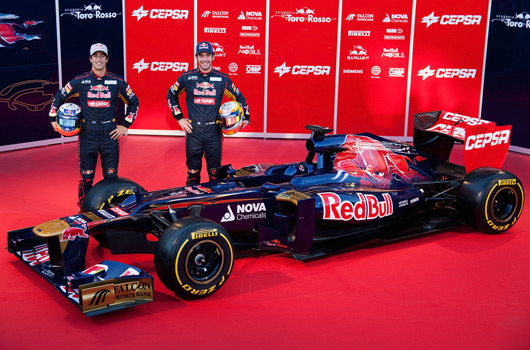
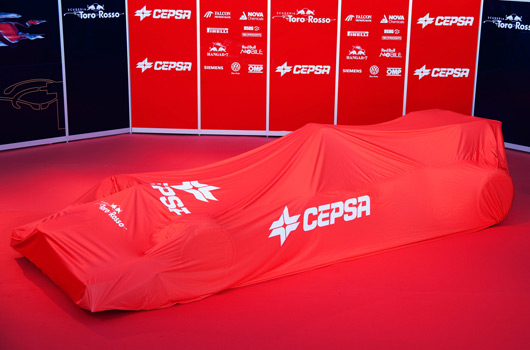
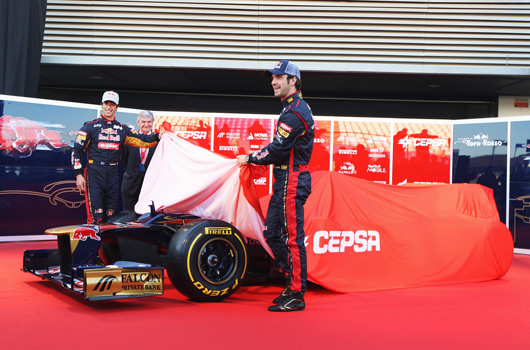
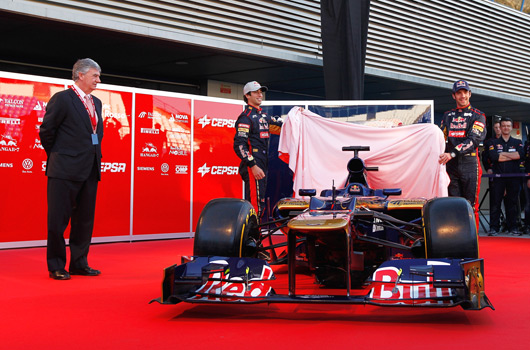
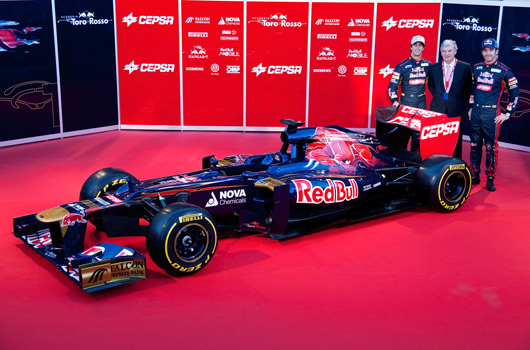
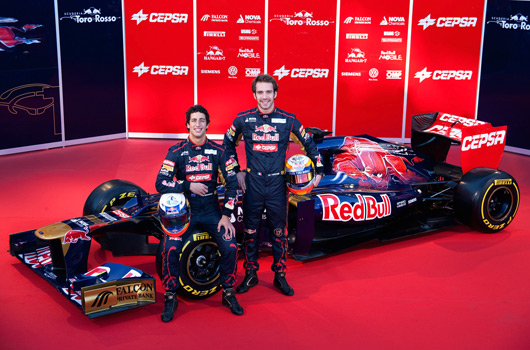
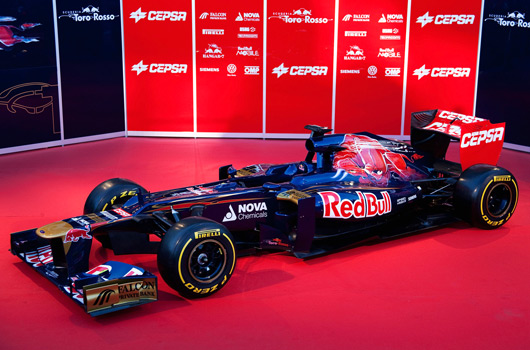
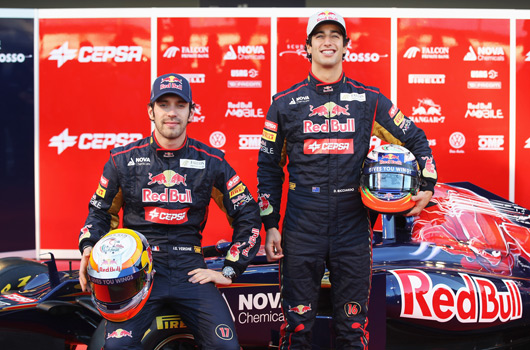
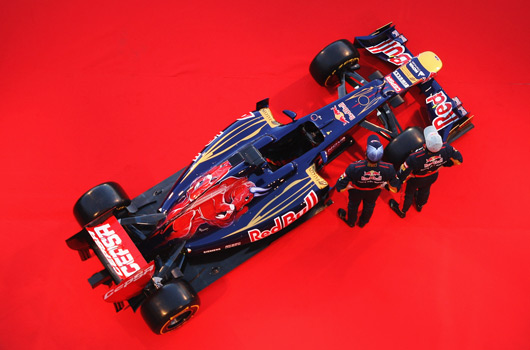
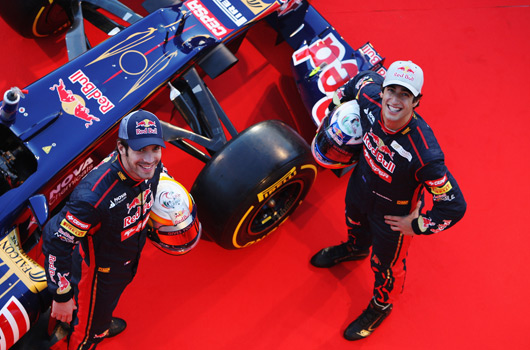
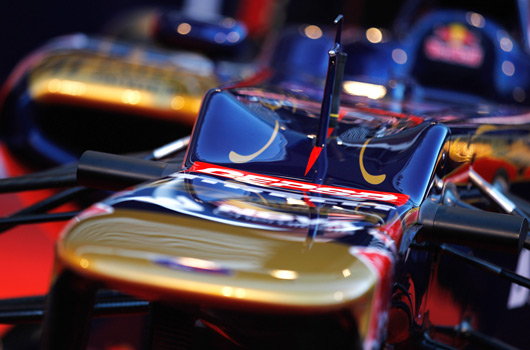
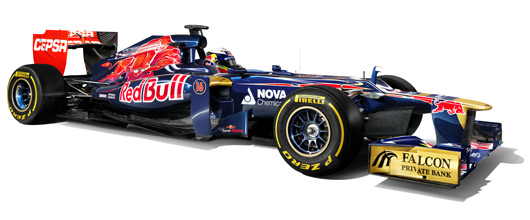
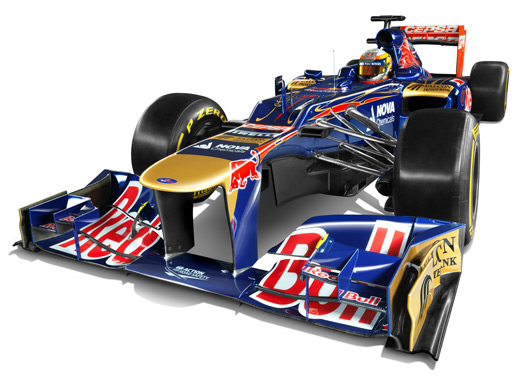

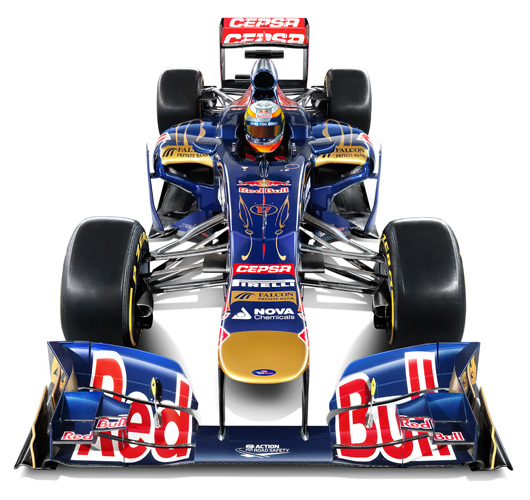
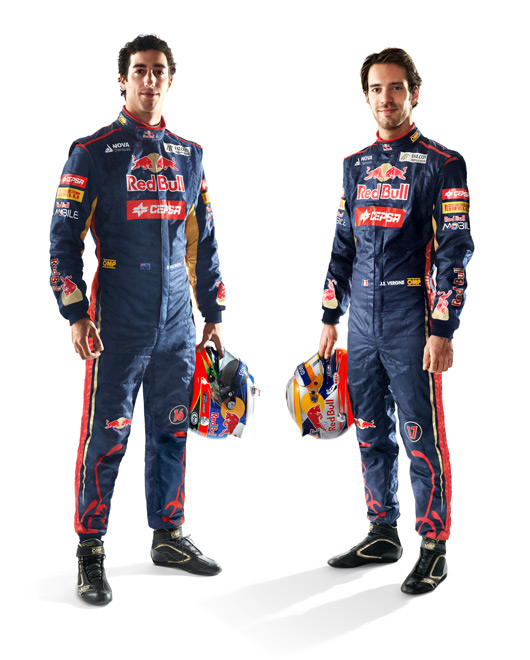
4 replies on “Scuderia Toro Rosso unveils 2012 F1 car”
[…] Mark Webber in the RB8 was fastest of the 2012 cars with his Australian compatriot Daniel Ricciardo next in the STR7. […]
[…] Scuderia Toro Rosso STR7 […]
[…] Chassis: STR7 […]
[…] Chassis: STR7 […]